Introduction
In the fast-paced world of software development, maintaining high code quality and consistency is paramount. Linters, the unsung heroes of static code analysis, offer a robust solution by scrutinizing source code for potential errors and coding style violations without executing it. These tools provide immediate feedback, enabling developers to rectify issues early in the development process, thereby saving invaluable time and effort.
Integrating linters into Continuous Integration/Continuous Deployment (CICD) workflows ensures standardized best practices across projects, fostering teamwork and enhancing productivity. As the landscape of software engineering evolves, the importance of regularly updating linter rules cannot be overstated. Embracing linters not only leads to cleaner code but also aligns development practices with current standards, ultimately driving more efficient and reliable software development.
What is a Linter?
'Linters are static analysis tools that scrutinize your source material to highlight potential errors, coding style violations, and other issues without executing the program.'. These tools are invaluable in maintaining software quality and consistency by providing immediate feedback, enabling developers to rectify mistakes early in the development process. According to Manushree Vijayvergiya's research, deploying an end-to-end system for enforcing coding best practices significantly enhances the developer workflow and saves hundreds of thousands of engineer hours annually. By incorporating analysis tools into a CICD workflow, teams can ensure that builds fail when non-compliant scripts are detected, thus standardizing best practices across the entire project. As the software engineering field evolves, the community has noted the need for common benchmarks, like SWEBench for bug resolution, to assess the effectiveness of such tools. 'Adopting tools for static analysis not only helps in producing cleaner programming but also encourages collaboration and guarantees that everyone follows the same development standards, enhancing the process of development to be more effective and trustworthy.'.
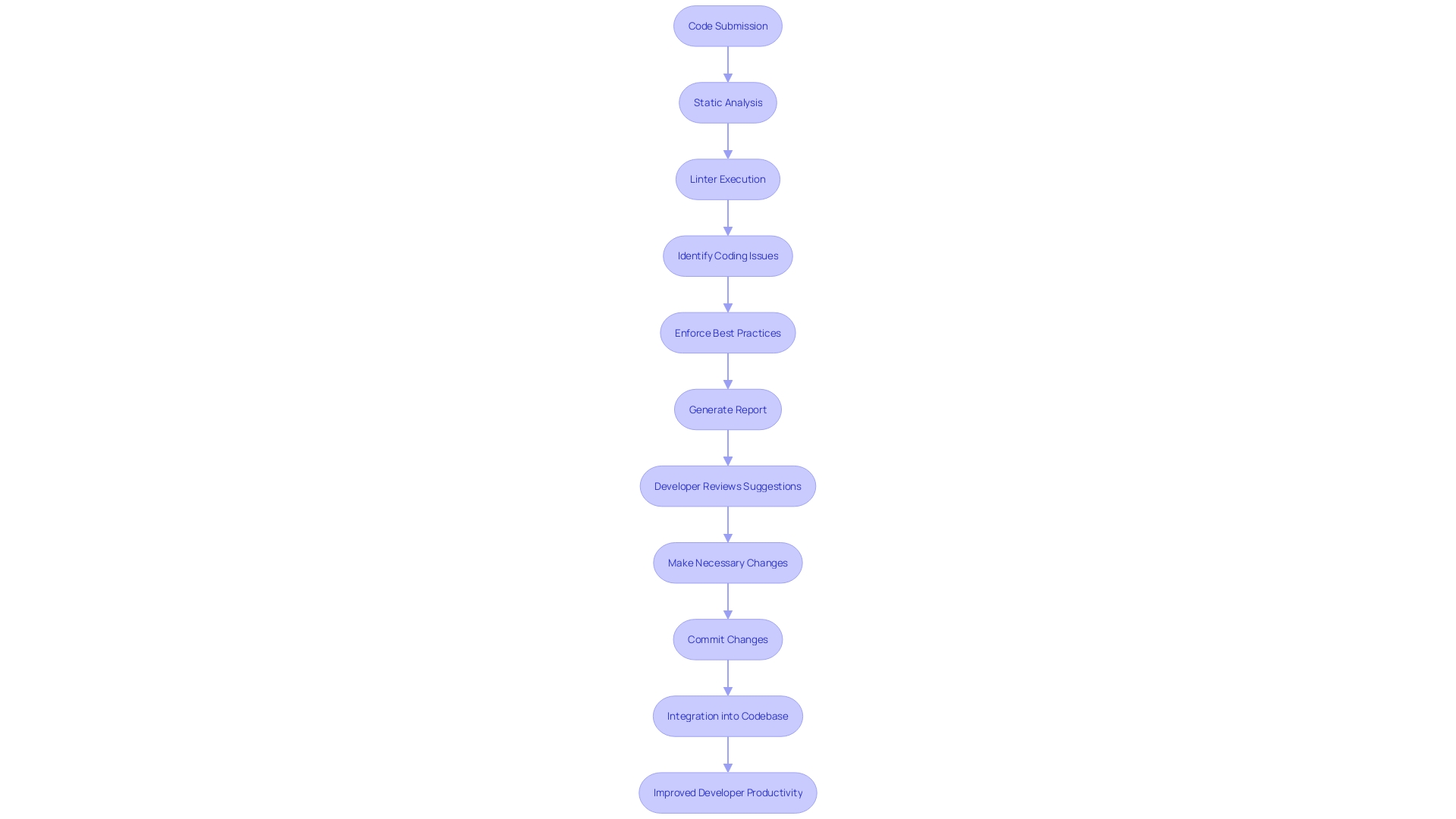
How Linters Work
Linters operate by analyzing source text and applying a set of predefined rules or guidelines related to syntax, semantics, or style conventions. As they scan the code, code analysis tools produce warnings and errors based on detected violations. Developers then review these reports to address identified issues, ensuring adherence to best practices and reducing the likelihood of bugs.
The importance of regularly updating linter rules is often underestimated. Many developers consider setting up a linter as a one-time activity, usually completed at the beginning of the work. However, linters and their rules evolve alongside development practices. Neglecting to update them can leave the codebase outdated, especially in older projects with obsolete coding approaches and library versions. For example, pressing requirements like transitioning to the newest Node.js LTS version or refreshing an essential library frequently underscore the importance of reviewing linter settings to uphold software standards.
Research has demonstrated that contemporary static analysis tools, such as style checkers, are essential in identifying mistakes and maintaining programming standard. For example, SonarQube has been identified as particularly effective in defect detection across multiple programming languages. Adopting and maintaining up-to-date linter rules not only helps in catching bugs early but also aligns the codebase with current best practices, ultimately fostering a more efficient and robust development environment.
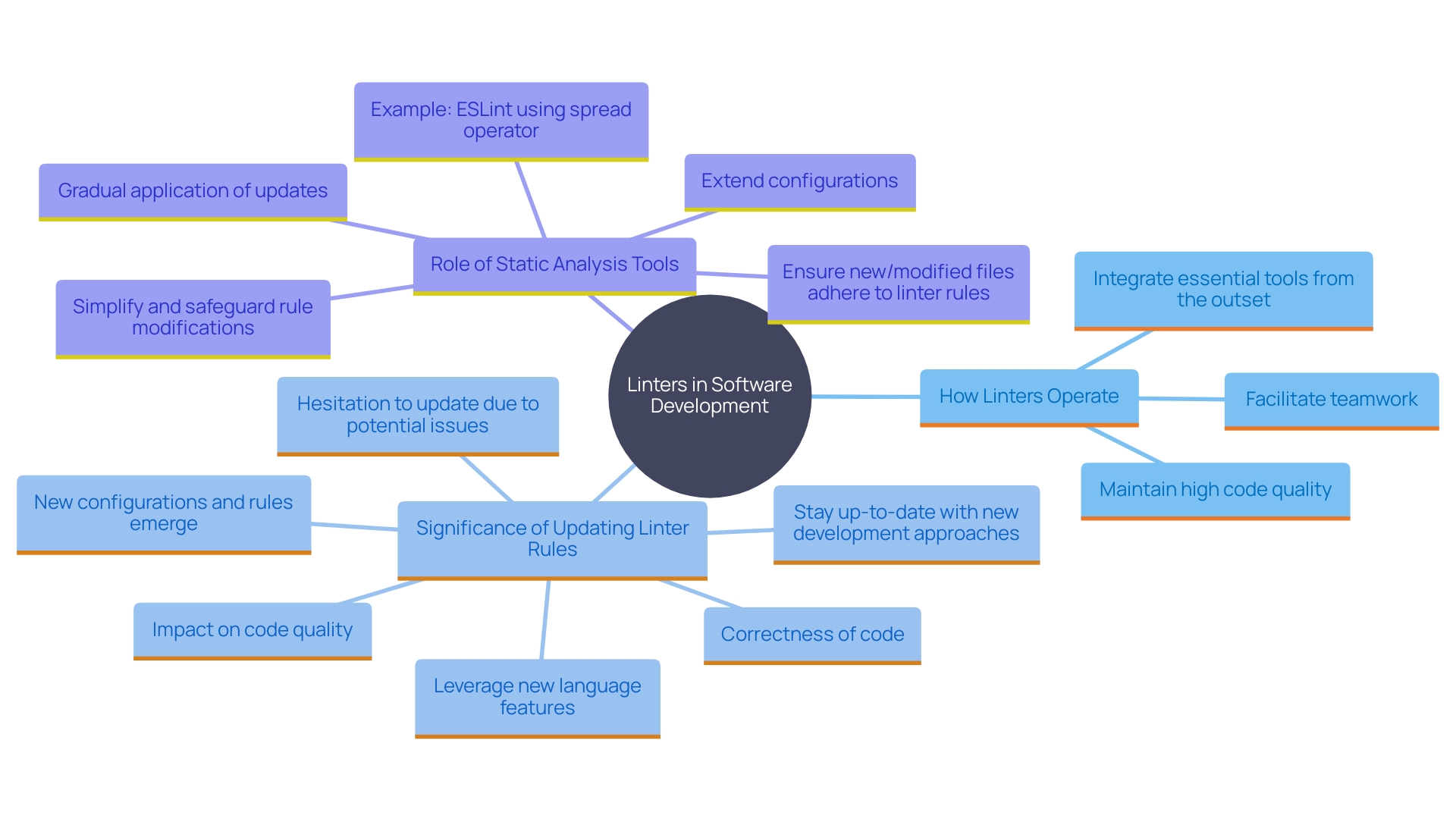
Benefits of Using Linters
Incorporating code analysis tools into the development workflow offers numerous advantages that extend beyond just identifying mistakes. Linters enhance quality by identifying issues before the program is executed, thus saving time and effort during the debugging phase. They ensure consistency across codebases, which is crucial for team collaboration. Moreover, linters enhance developer productivity by reducing the cognitive load associated with manual code reviews and providing clear coding standard guidelines.
Linters play a vital role in updating and maintaining older initiatives. Often, developers are hesitant to work on outdated projects due to obsolete linter rules and development platforms. However, updating code quality tools and their rules gradually through each pull request allows for a smoother transition without the need to overhaul the entire codebase at once. This approach ensures that new and modified files comply with the latest standards, promoting long-term quality of the software.
Furthermore, contemporary code analyzers provide extensive configuration options, making it easier to adapt to new coding practices. For instance, ESLint allows for configuration extensions using the spread operator, enabling developers to maintain up-to-date coding standards effortlessly.
Incorporating linters is not just about maintaining coding style but also about ensuring correctness and leveraging new language features. As Jason Benskin aptly noted, 'Writing clean and error-free programming is not only a best practice but a necessity for maintaining the functionality, security, and performance of software applications.' Linters, therefore, are indispensable tools in the quest for efficient and high-quality software development.
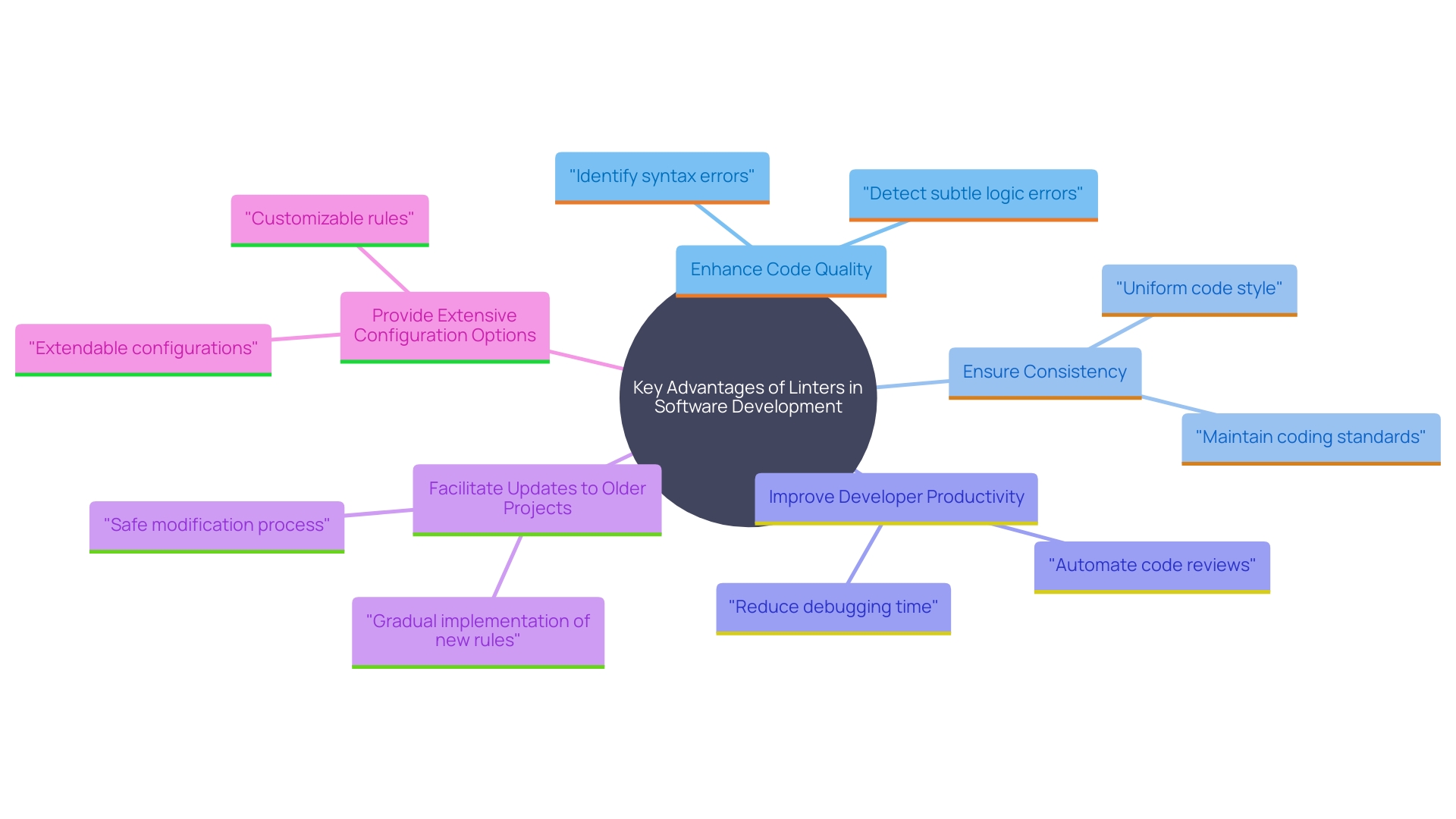
Types of Checks Linters Provide
Linters play an essential role in maintaining software quality by performing various checks, including syntax checking, style enforcement, and semantic analysis. Syntax checking helps identify structural errors in the program, such as missing parentheses or incorrect indentation. Style enforcement ensures that the program adheres to specified formatting guidelines, promoting consistency and readability. Semantic analysis assesses the logical components of the program, identifying possible errors or improper use of programming constructs.
It's important to note that the effectiveness of code analysis tools is significantly influenced by their configuration and updates. Developers often hesitate to update linter rules due to concerns about potential issues and the need to modify legacy systems, especially in large projects. Nonetheless, ensuring linters are current with new development methods and language capabilities is essential for preserving programming standards and utilizing the full potential of the tools. 'Linters are not only focused on enforcing coding style but also on ensuring the accuracy of the program and keeping up with evolving best practices in software development.'.
Common Uses of Linters
Linters serve an essential function in upholding standards in various development settings, ranging from individual endeavors to extensive group collaborations. By incorporating linters into continuous integration pipelines, developers can automate standards checks, ensuring that every modification meets established criteria before being merged into the main repository. This is especially beneficial in open-source projects, where consistency and adherence to coding standards are vital. Linters assist in identifying mistakes and possible issues early, minimizing the time dedicated to debugging and improving the overall quality and maintainability of the programming. They also serve as educational tools for new contributors, guiding them to write better code.
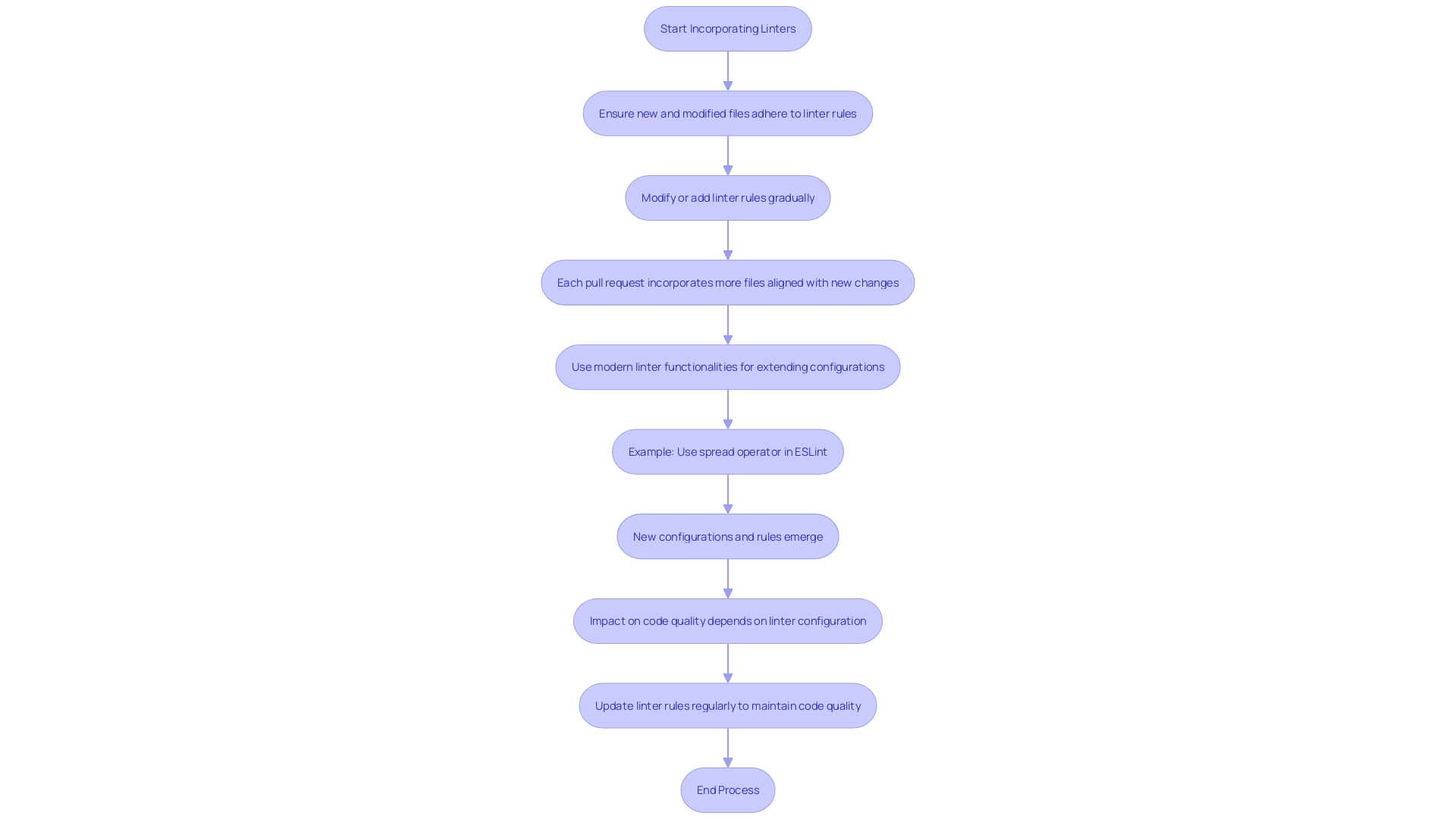
Linters in Different Programming Languages
Different programming languages possess their own specialized tools for code analysis, each customized to the particular syntax and conventions of the language. For instance, ESLint is popular for JavaScript, while Pylint is commonly used for Python. These language-specific tools not only verify language rules but also enable customization to meet the distinct requirements of an initiative, improving their efficiency across various programming settings.
The main objective of these tools is to promote collaboration and uphold high programming standards. Setting up a code analysis tool and its guidelines is frequently viewed as a one-time activity, usually performed at the beginning of the project, but these tools and their regulations change over time. New configurations, regulations, and modifications to current rule options arise, affecting the standard of your programming. By integrating linters into your Continuous Integration/Continuous Deployment (CICD) workflow, you ensure that your build fails if it detects non-compliant scripts, thereby standardizing shared best practices across the team.
For example, ESLint for JavaScript is based on a shared configuration file you provide in your repository. This file inherits a series of grouped recommended rules for best practices, driven by the community, and even provides a mechanism for auto-fixing some of them with the --fix flag. Pylint for Python can be set up in a comparable way, making it a powerful tool for maintaining code quality in Python endeavors.
Incorporating these tools into your development process not only helps in catching errors early but also ensures that everyone follows the same coding standards, reducing conflicts and enhancing collaboration. This is particularly important in open-source projects, where a robust community of developers collaboratively build and maintain the codebase.
Ultimately, static analysis tools provide a narrow-focused examination that assists with niche technology issues, offering rapid feedback to developers with low performance overhead. Although they might not provide a comprehensive perspective of the whole system, their capability to guarantee readability and maintainability makes them essential in contemporary software development.
Integrating Linters into Development Processes
Incorporating code analysis tools into development processes can significantly enhance code quality and collaboration. Developers can run linters manually, configure them within their Integrated Development Environment (IDE), or include them in automated build and deployment pipelines. This guarantees that new and altered files comply with revised linter guidelines, promoting a gradual and secure adjustment without the requirement to completely revamp whole undertakings at once. A practical approach is to apply linter updates gradually, incorporating more files with each pull request, thus aligning with evolving standards. By making linter usage a standard practice, teams can maintain high programming quality and streamline collaboration, ultimately leading to better software outcomes. As noted by experts, configuring linters should not be seen as a one-time task but a continuous process that evolves with the project, ensuring consistent and clean code throughout its lifecycle.
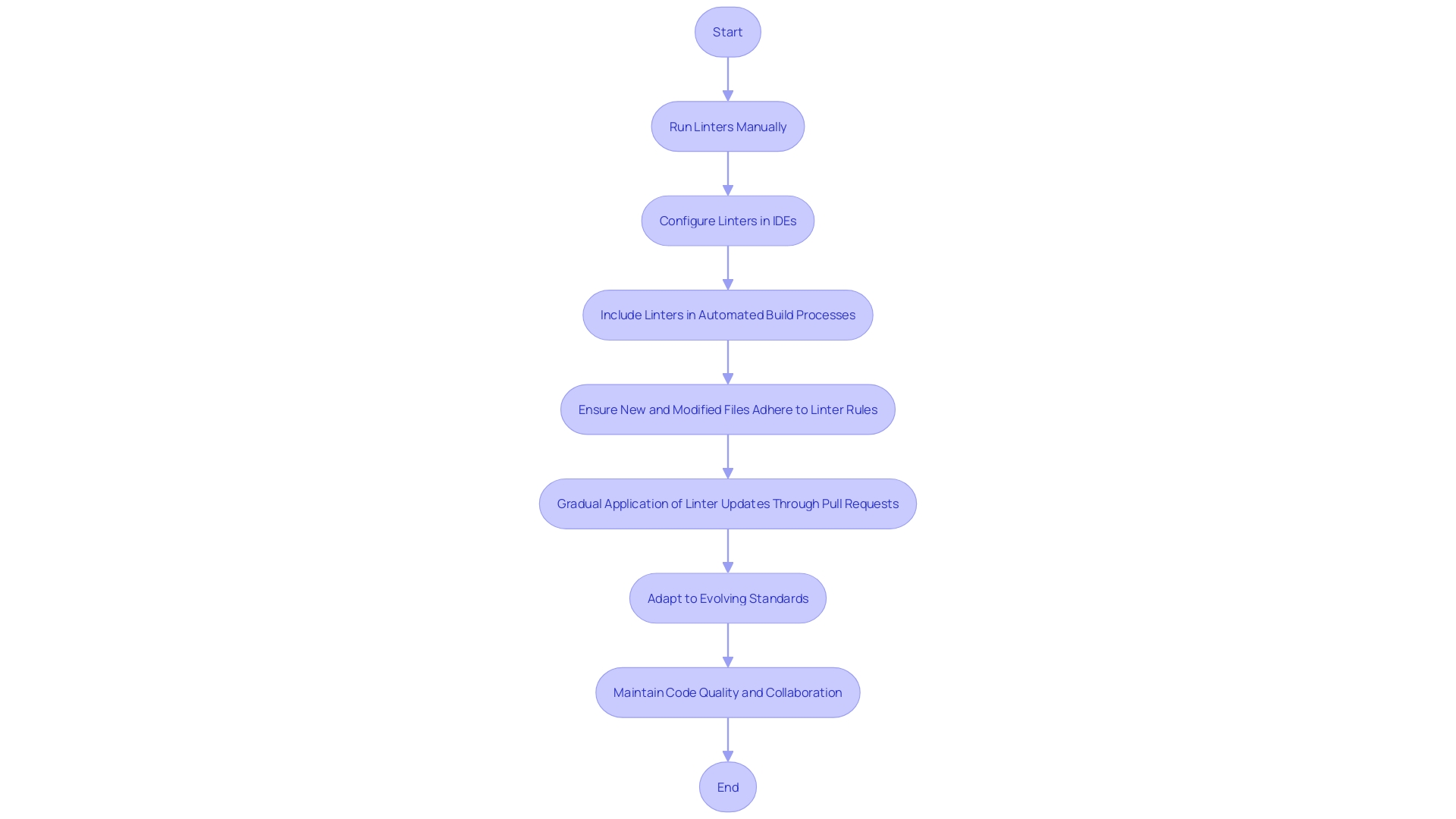
Conclusion
Maintaining high code quality through the use of linters offers numerous advantages that significantly enhance the software development process. By identifying potential errors and enforcing coding standards before execution, linters not only save time during debugging but also promote consistency across codebases. This is especially vital in collaborative environments where teamwork relies on adherence to shared best practices.
Regularly updating linter rules ensures that projects remain aligned with the latest development standards and practices, fostering a more efficient and reliable workflow.
The integration of linters into Continuous Integration/Continuous Deployment (CICD) pipelines further amplifies their benefits. Automating code quality checks ensures that any non-compliant code is flagged early, reducing the likelihood of errors making it into production. This proactive approach not only enhances the overall quality and maintainability of the code but also serves as a valuable educational tool for developers, particularly newcomers who are learning to write better code.
In conclusion, embracing linters is a strategic move for any development team aiming for maximum efficiency and productivity. By leveraging these powerful tools, organizations can achieve cleaner, more reliable code while fostering a culture of collaboration and continuous improvement. The commitment to integrating and updating linters ultimately drives better software outcomes, ensuring that development practices evolve alongside the ever-changing landscape of technology.
Frequently Asked Questions
What are linters?
Linters are static analysis tools that analyze source code to identify potential errors, coding style violations, and other issues without executing the program. They provide immediate feedback to developers, helping maintain software quality and consistency.
How do linters enhance developer workflows?
Linters can be integrated into Continuous Integration/Continuous Deployment (CICD) workflows, ensuring that builds fail when non-compliant scripts are detected. This standardization helps enforce coding best practices across the project, ultimately saving significant time and effort in the development process.
Why is it important to regularly update linter rules?
Regularly updating linter rules is essential because coding practices and language features evolve. Neglecting updates can lead to outdated codebases, especially in older projects. Keeping linters current helps catch bugs early and aligns the codebase with contemporary best practices.
What benefits do linters provide beyond error detection?
Linters improve code quality by identifying issues before the program is executed, ensuring consistency across codebases, and enhancing productivity by reducing the cognitive load associated with manual code reviews. They also serve as educational tools for new contributors.
How do linters assist in maintaining older projects?
Linters help update and maintain older projects by allowing developers to gradually incorporate updated rules through pull requests. This method avoids the need for a full codebase overhaul, ensuring compliance with current standards in new and modified files.
What role do linters play in team collaboration?
Linters promote collaboration by ensuring that all team members adhere to the same coding standards. This consistency reduces conflicts and enhances the quality and maintainability of the code, which is especially important in open-source projects.
Are there specific linters for different programming languages?
Yes, different programming languages have specialized tools tailored to their syntax and conventions. For example, ESLint is widely used for JavaScript, while Pylint is common for Python. These tools can be customized to meet the specific needs of a project.
How can teams incorporate linters into their development process?
Teams can run linters manually, configure them within their Integrated Development Environment (IDE), or integrate them into automated build and deployment pipelines. This ensures that all new and modified files comply with the latest linter guidelines.
What is the main objective of using code analysis tools like linters?
The primary objective of using linters is to promote collaboration and uphold high programming standards. By integrating these tools into the development process, teams can catch errors early and ensure that everyone follows consistent coding practices.
Why is writing clean and error-free code important?
Writing clean and error-free code is crucial for maintaining the functionality, security, and performance of software applications. Linters are indispensable tools in achieving high-quality software development by enforcing coding standards and ensuring correctness.




